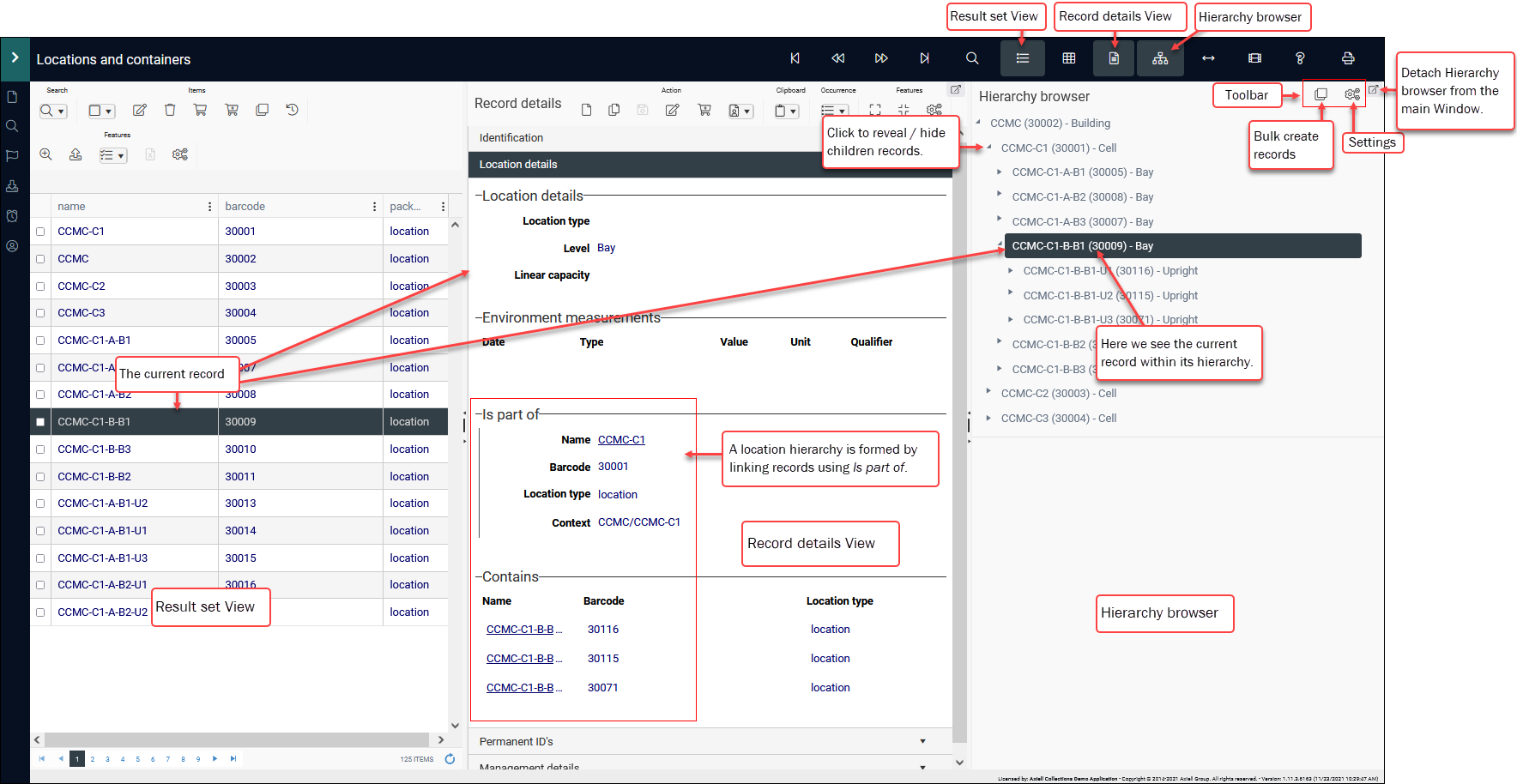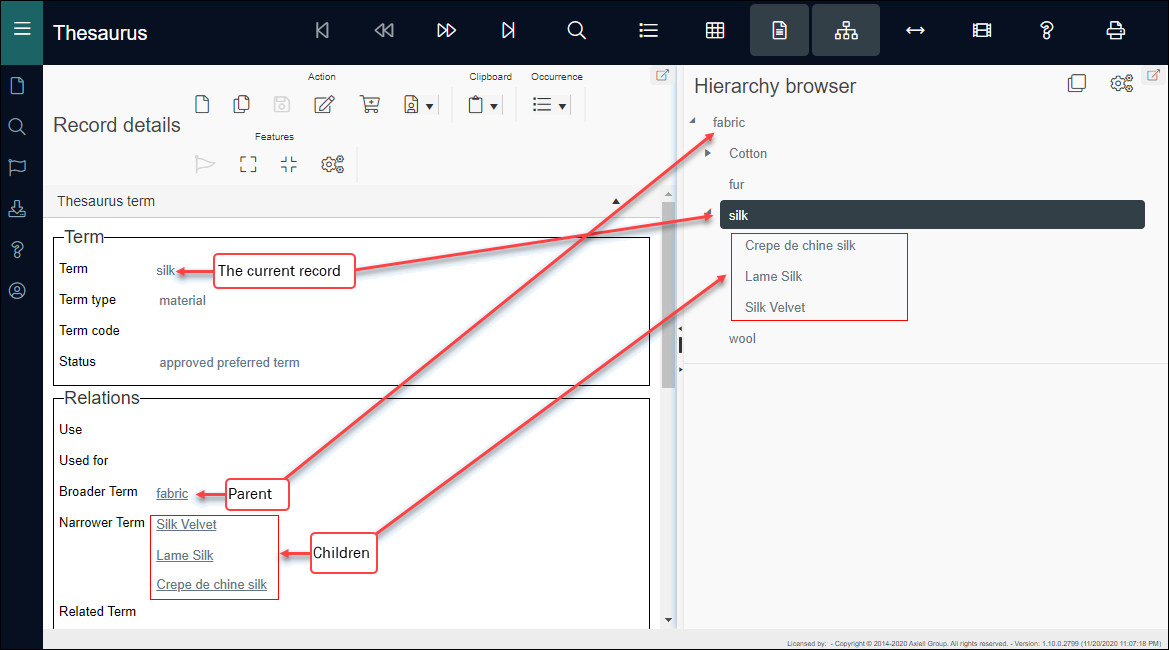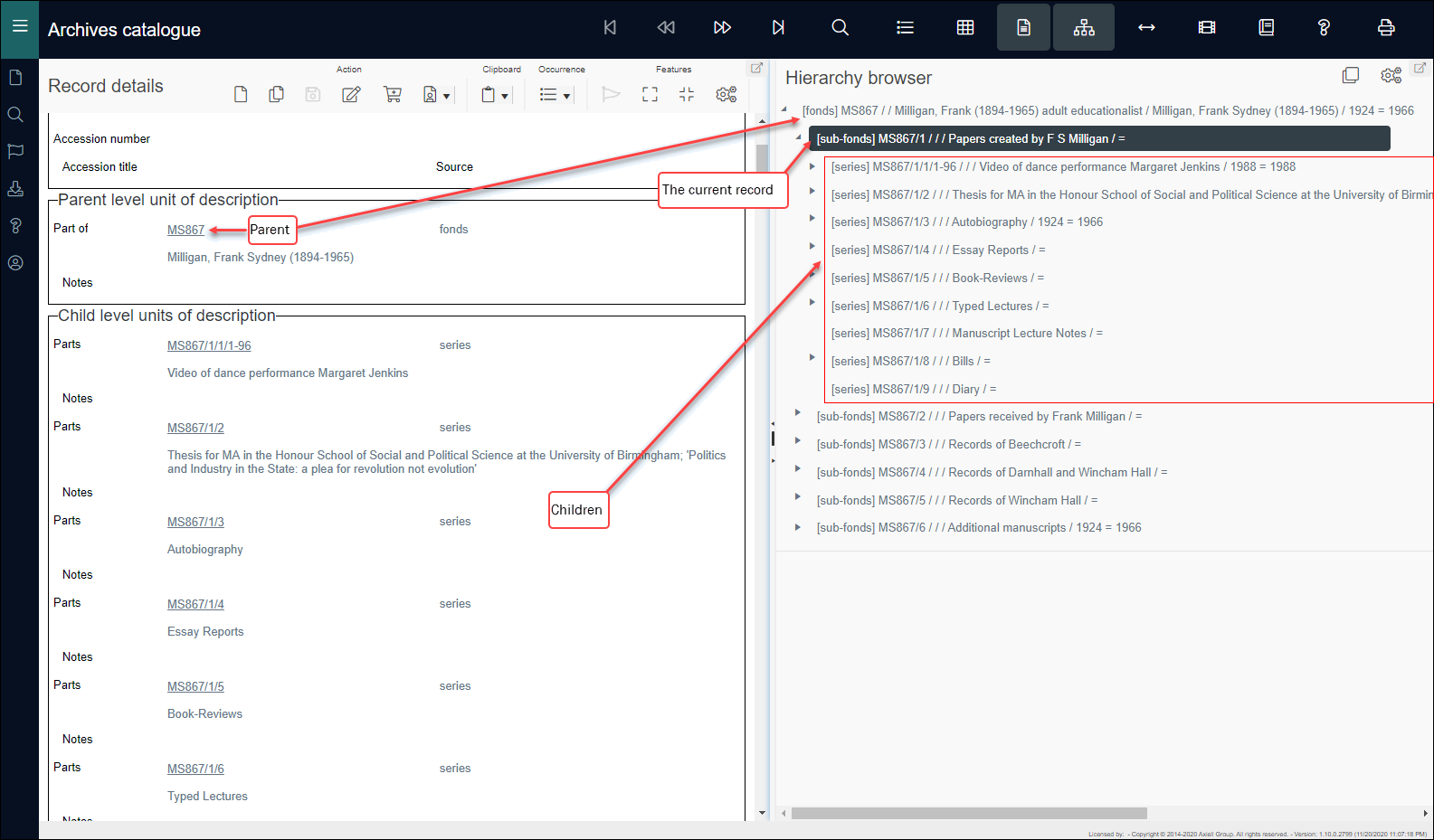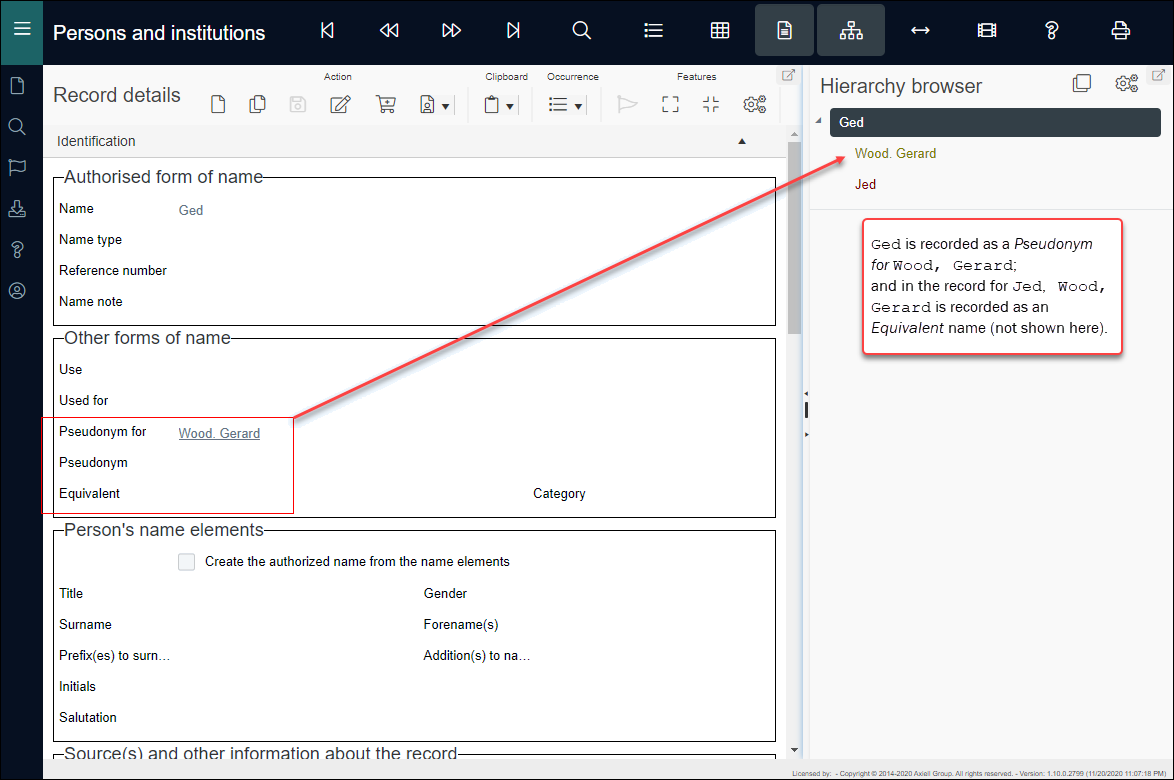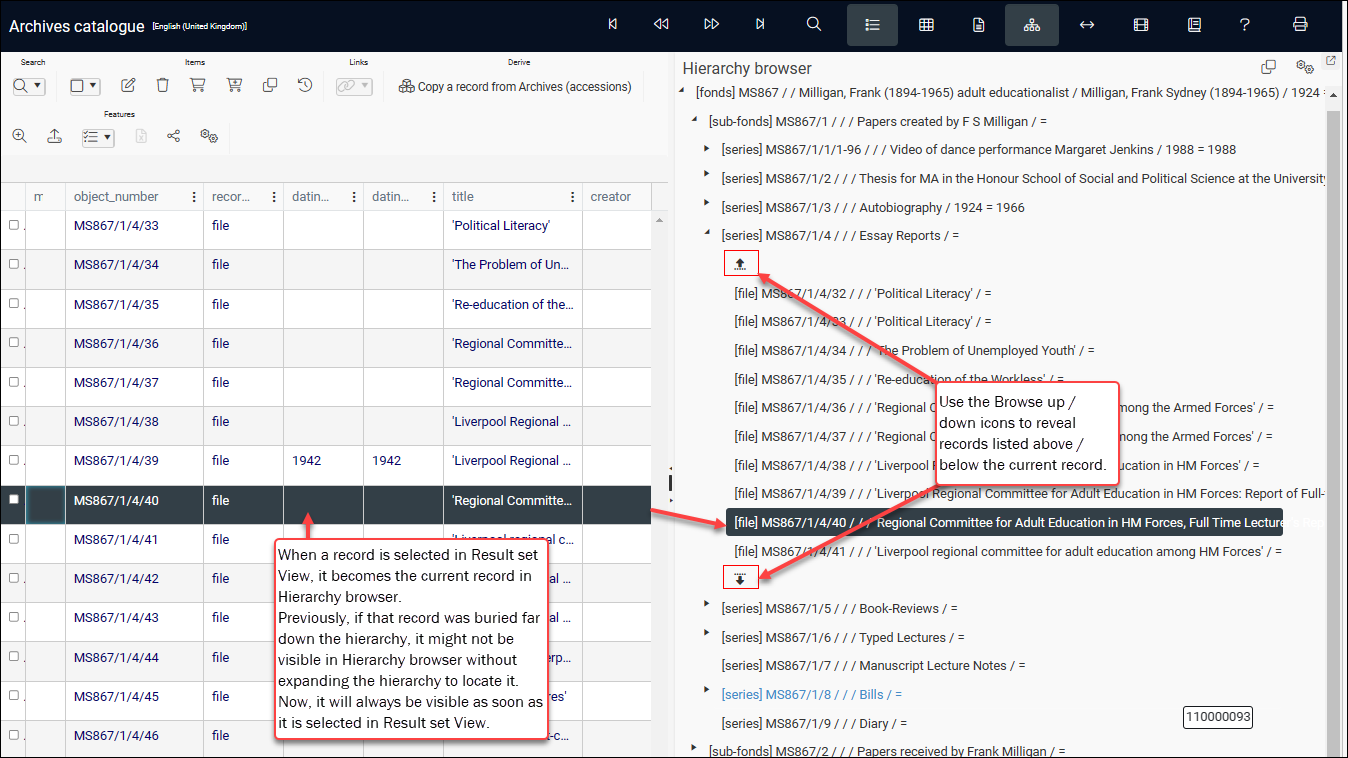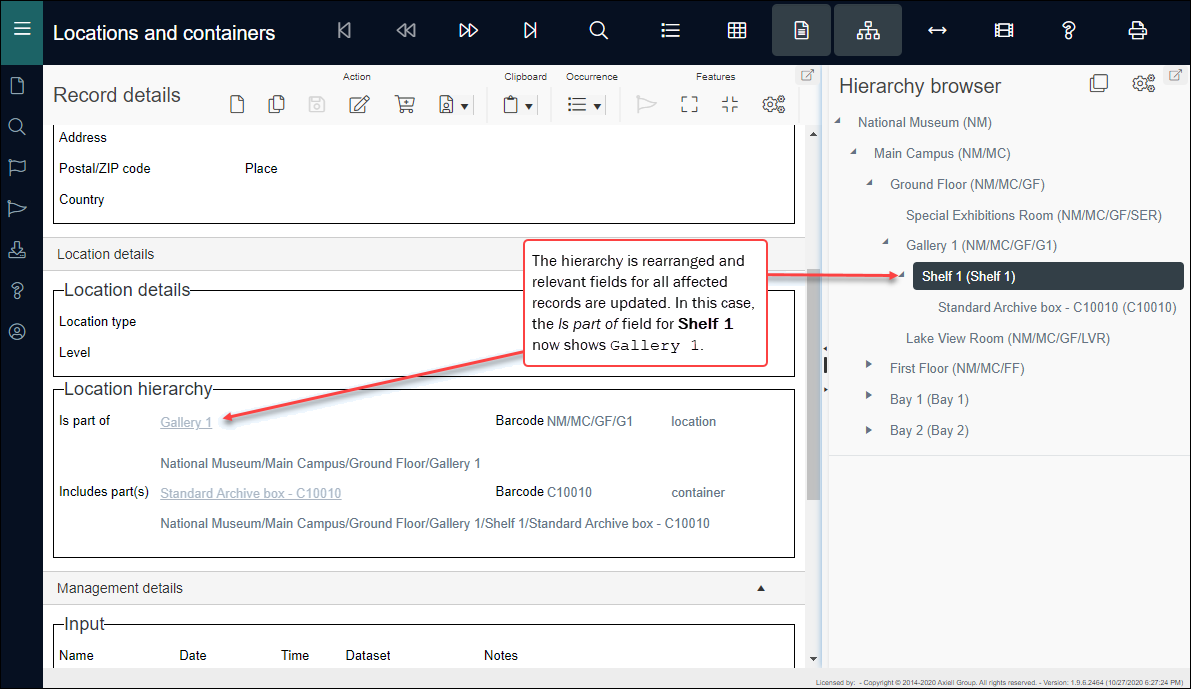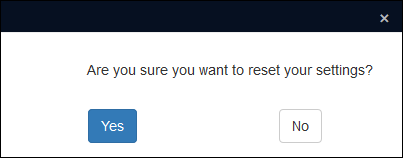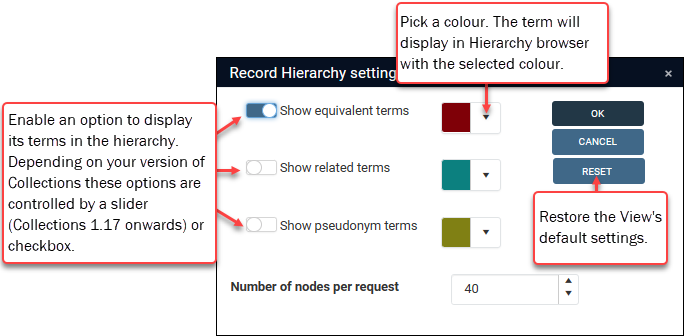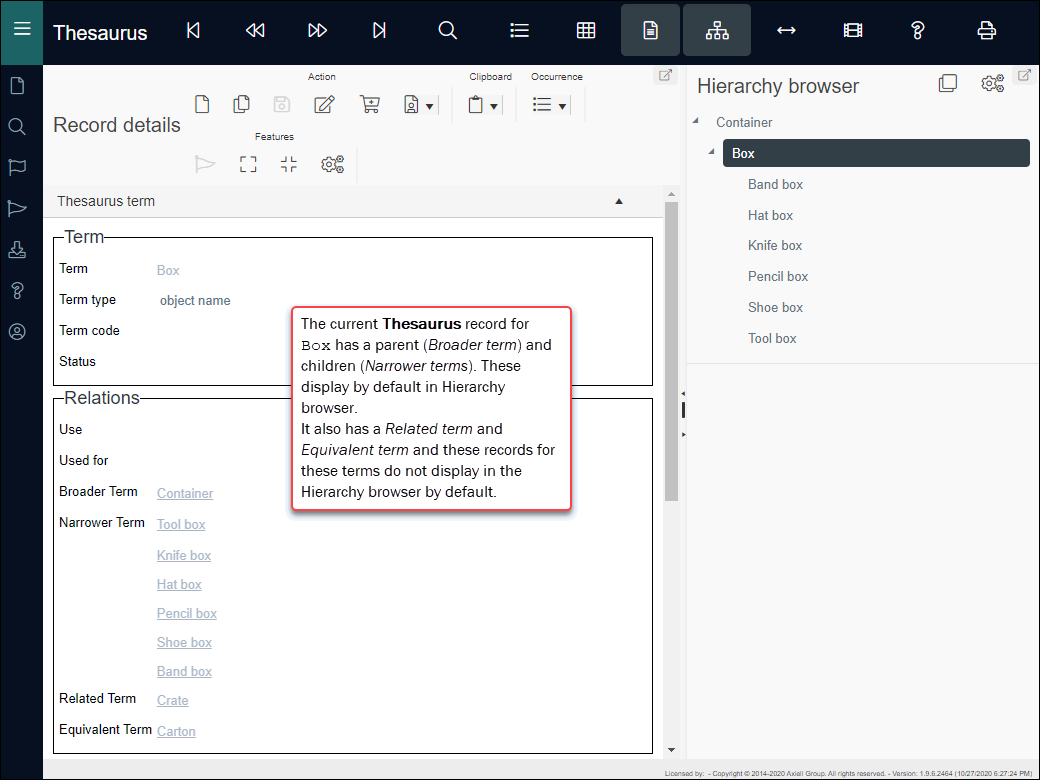Hierarchy browser
Bulk create records
See How to use the Bulk create records window in the Application configuration options topic for details about configuring this feature, including configuring automatic numbering; and limiting which screens are available to users in the Bulk create records box.
Hierarchy browser is useful for viewing records in data sources![]() The management of a collection can involve a vast amount of information about objects / items / books, people and organizations, events, administration and more. This information is stored as records in data sources. Each data source stores a specific type of information: details about collection items, people, events, loans, and so on. such as Archives, Locations and containers, Taxonomy and Thesaurus that typically organize records in parent / child / sibling relationships. Hierarchy browser highlights the current record
The management of a collection can involve a vast amount of information about objects / items / books, people and organizations, events, administration and more. This information is stored as records in data sources. Each data source stores a specific type of information: details about collection items, people, events, loans, and so on. such as Archives, Locations and containers, Taxonomy and Thesaurus that typically organize records in parent / child / sibling relationships. Hierarchy browser highlights the current record![]() The record currently displayed in Record details View or highlighted (with a solid background) in Result set View or Gallery View for instance. in relation to its parent(s), sibling(s) and children (if any):
The record currently displayed in Record details View or highlighted (with a solid background) in Result set View or Gallery View for instance. in relation to its parent(s), sibling(s) and children (if any):
Hierarchy browser may also be useful when working in Persons and institutions if records are related to each other via the Pseudonym or Equivalent fields as these relationships can be shown (see Settings below for details).
These data sources may build hierarchical relationships between records in different ways (using different fields), but they all result in a hierarchy of records that can be viewed in the Hierarchy browser:
Locations and containers builds a hierarchy with the Is part of fields:
The Thesaurus builds a hierarchy by establishing broader, narrower, equivalent and related relationships between records for terms:
Note: By default, Hierarchy browser only shows records for broader and narrower terms in the hierarchy. See Settings below for details about how to display equivalent and related records.
The Archives catalogue builds a hierarchy with the Part of and Parts fields:
Persons and institutions builds hierarchical relationships with the Pseudonym and Equivalent fields:
Note: By default, Hierarchy browser does not show records for pseudonyms or equivalent names. See Settings below for details about how to display these records.
By default Hierarchy browser opens in the main Collections window, but it can be detached and used in a separate window.
In the example above, three views are open: Result set View, Record details View and Hierarchy browser. When a record is selected in Result set View, the current record![]() The record currently displayed in Record details View or highlighted (with a solid background) in Result set View or Gallery View for instance. is updated in Record details View and Hierarchy browser. Selecting a record in Hierarchy browser will update the current record in Record details View (but not in Result set View).
The record currently displayed in Record details View or highlighted (with a solid background) in Result set View or Gallery View for instance. is updated in Record details View and Hierarchy browser. Selecting a record in Hierarchy browser will update the current record in Record details View (but not in Result set View).
The current record in Result set View is always visible in Hierarchy browser no matter how many deep the hierarchy or the number of records that are set to display in Hierarchy browser1. This is useful in large and deep hierarchies (with many parent / child records), in particular when Hierarchy browser is set to display a limited number of records. Where required, Browse up / down icons are available to display more records in the hierarchy:
Rearrange the hierarchy with drag and drop
The parent / child / sibling relationships between records can obviously be changed by editing a record in Record details View or, more simply, by dragging and dropping records in the Hierarchy browser.
A record can be made a child of another record in the hierarchy, or the order of records in the hierarchy can be changed:
A record can be made a child of another record in the hierarchy by clicking it, dragging it to the new parent and releasing the mouse button. If the relocated record has children, all of its children will be relocated with it and all relevant fields (Is part of for instance in a record in Locations and containers) in any records affected by the move will be updated to reflect the change.
In this example, Shelf 1 is relocated from Special Exhibitions Room to Gallery 1:
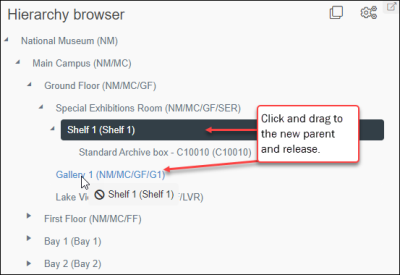
When the mouse button is released, a pop-up will ask you to confirm or cancel the move:

Select OK to confirm the move and update relevant fields for all affected records:
If a record is dragged to a sibling record (one with the same parent and on the same level), a pop-up will ask if you want to make the record a child of its sibling or to change the order of the siblings. In this example, Gallery 1 is dragged to its sibling Special Exhibitions Room:
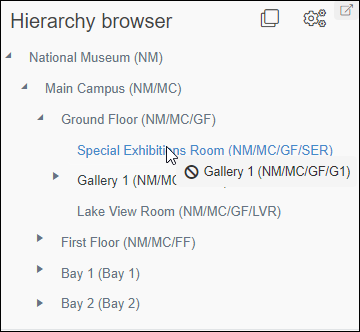
When the mouse button is released, a pop-up will give you the option to cancel the move; make the record a child of the sibling or (by default) to change the order of the two records:
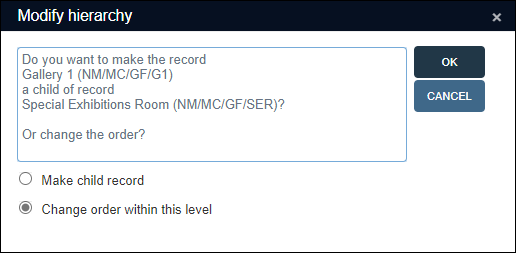
In this case the order of records is changed:

Note: This option will not be available if automatic sorting of records (ascending / descending) has been enabled.
The Hierarchy browser toolbar
The Hierarchy browser toolbar sits below the top Toolbar and contains two options:

|
Option |
Icon |
Details |
|---|---|---|
|
|
Used to create multiple records with common data simultaneously. This option is only available to users who are authorized to add records to the current data source See How to create multiple records simultaneously: Bulk create records for details. |
|
|
|
Configure Hierarchy browser to show records for Equivalent and Related terms and names, and Pseudonyms; and specify the maximum number of records to display in Hierarchy browser (per request). Any changes you make only apply to the current data source. They are associated with your user account and recalled by Collections whenever you log in. You can restore the View's default settings by selecting Reset in the Record Hierarchy settings box2. A message will ask you to confirm the reset:
Tip: An option in the Main menu enables you to restore ALL settings you have changed across Collections back to their default. The Reset option in the Record Hierarchy settings box only affects this View's settings. By default the Hierarchy browser displays parent(s) and children in a hierarchy. In the Thesaurus it does not show Equivalent or Related terms; and in Persons and institutions it does not show Pseudonyms or Equivalent names. The Settings box provides options to show / hide these records in the hierarchy:
For example The following term, Box, in the Thesaurus has a parent (Broader term) and children (Narrower terms). These display by default in Hierarchy browser. It also has a Related term and Equivalent term and these do not display in the Hierarchy browser by default: To display Equivalent and Related terms in Hierarchy browser, enable the appropriate option in the Settings box. The terms will display in Hierarchy browser and will be highlighted with a colour picked from the associated drop list:
Set the Number of nodes per request option to the maximum number of records (nodes) to load in Hierarchy browser. The higher the value, the longer it will take the hierarchy to load. A lower value will improve performance (the minimum number is 10). Note that the limit may mean that you do not see the full hierarchy: click the Browse up / down icons3 to request more records, displaying more of the hierarchy: Repeat as required. |
